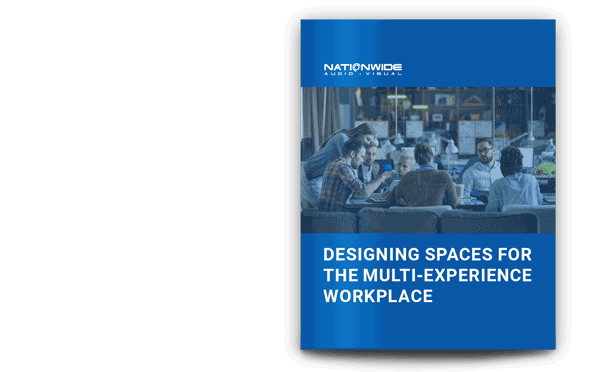How the Quality of Spaces Impacts the Multi-Experience Workplace
The gray cubicle in a dreary office has come to represent a humdrum work life. As companies strive to improve employee engagement and experiences, they’re creating more inviting spaces. With the right approach and equipment, today’s office doesn’t have to look and feel confining.
The multi-experience workplace is gaining in popularity, and it’s anything but boring. It’s equipped with digital tools and environments that let employees complete work in meaningful, creative, efficient, and collaborative ways. The multi-experience workplace also supports flexible work styles, including hybrid collaboration.
With 65% of employees wanting hybrid work arrangements, a flexible and engaging environment is more important than ever.
How Multi-Experience Workspaces Impact Employee Experience
A multi-experience workplace allows employees to work where and how they want. Workspaces include those that are informal, flexible, and varied in size. By providing a variety of workspaces equipped with a range of technologies, employees:
- Can be more creative
- Aren’t limited to certain types of work
- Can actively collaborate with remote coworkers
- Are able to find spaces for quiet, focused work
Employees in a multi-experience workplace are neither tethered to nor limited by technology. They have easy-to-use tools that work with their everyday apps and devices.
What to Consider When Choosing AV Technology
When outfitting spaces with audiovisual technology, it’s essential to think about the types of work that will be done in the spaces, as well as the physical design and limitations of each space. Employees’ workstyle preferences should also influence technology decisions.
Look for tools that are easy to control via touch or voice. The audio and video quality should be clear for remote attendees. Interactive video conferencing tools should give all meeting participants access to the same capabilities. Look for technology that enables:
- Device interoperability
- Mobility for the ability to work from anywhere
- Wireless device connectivity for moving between spaces
- Flexibility to support various types of work and styles
- Ability to collaborate with hybrid groups of different sizes
- Compatibility with work-from-home tools
The Quality of Space Impacts Work Experiences
There’s not a specific set of tools that will transform work. The multi-experience workplace is supported by a combination of tools, leadership, the workplace environment, the physical spaces, and company ideology and culture.
When equipping spaces, consider how the workplace reinforces employees’ purpose, as well as your company culture. Spaces should also reflect the type and quality of products or services you provide. High-value work deserves high-value workspaces. Spaces impact the mood, mindset, and focus of those who inhabit them. If you want to inspire work that is exciting and innovative, then your office should reflect that. The drab, outdated workplace of identical cubicles, desks, and conference rooms is no longer good enough.
One especially important goal is that your technologies and spaces enable experiences that employees can’t get while working from home. These spaces will not only draw them into the office, but they will inspire new energy and ideas.
If you want to learn more about equipping spaces to accommodate a hybrid and flexible workforce, check out our white paper: Designing Spaces for the Multi-Experience Workplace.



